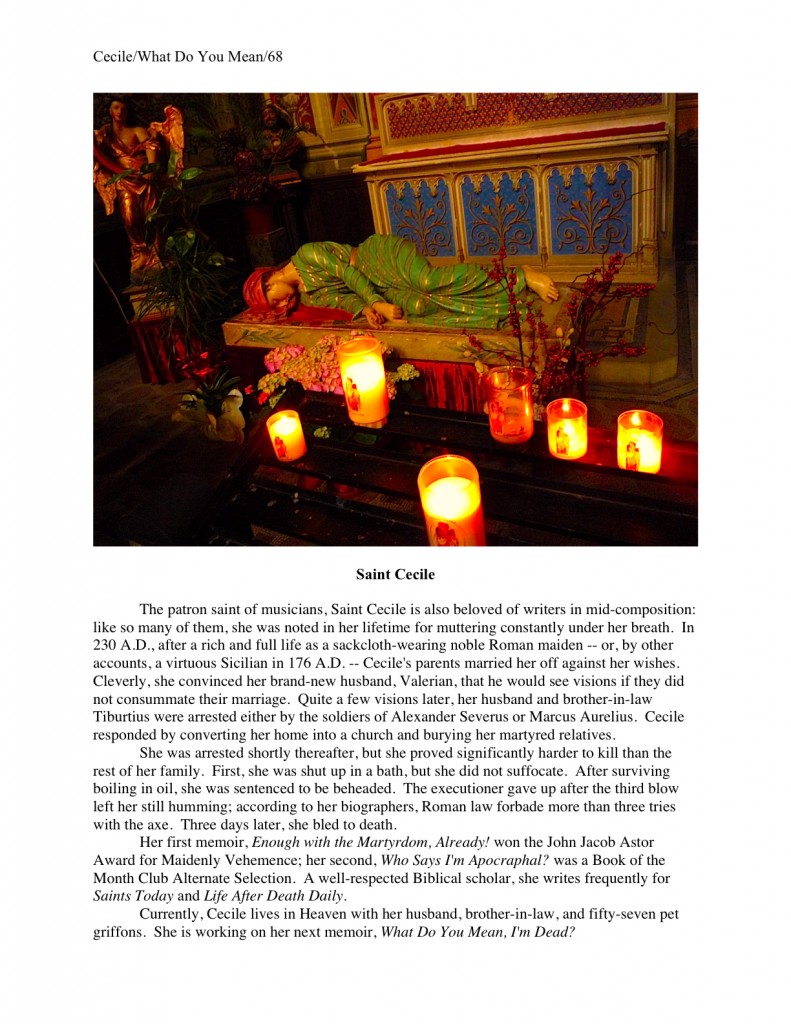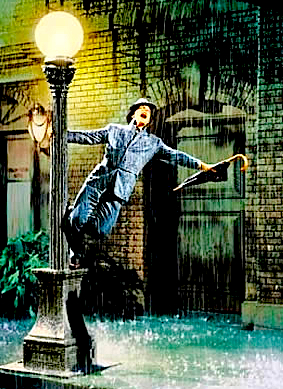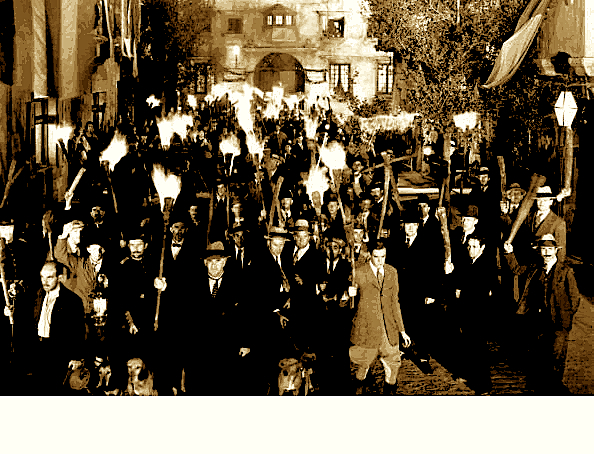
No time for a long-winded post today, I’m afraid. Once I start nagging, though, I do like to be consistent about it, so allow me to repeat: SIOA!
For those of you who missed yesterday’s post, that nifty little acronym stands for Send It Out, Already! It, in case you are curious, refers to requested materials that an agent or editor asked to see more than three months ago that the writer has yet to submit. At this time of year, manuscripts in need of SOIA-ing are generally those either pitched or queried last summer.
Or at that conference last winter. Or the summer before that.
While such a piece of advice may come as something of a surprise falling from the fingertips someone who routinely advises going over submissions with the proverbial fine-toothed comb — and a diverse array of highlighter pens — before sending it off, many aspiring writers get stuck between the query (or pitch) and submission stages of agent-finding, excited that a real, live agent wants to read the manuscript, yet afraid that it’s not quite ready to pass muster under Millicent the agency screener’s eagle eye.
This week, I’m concentrating on helping those writers become unstuck.
If you’ve found yourself in this kind of stasis: don’t be too hard on yourself. All too often, writers (and their well-meaning non-writing kith and kin) attribute not sending requested materials is attributed to procrastination, lack of ambition, an affection for self-sabotage, or even just plain laziness, but in my experience, none of these are usually what’s going on when a writer can’t seem to carry the manuscript to the mailbox.
Many, many writers lose the vim to submit, despite beginning with excellent intentions, yet they certainly don’t start out intending to be slow in getting their work out the door. They just want to make absolutely sure it’s perfect before they head off to the post office or hit the SEND button.
Perfection, as we all know, can take time — and the longer the revision drags on, the more likely the aspiring writer is to talk himself out of sending it at all. Here’s the progression I see most often:
1. The writer believes the manuscript to be in good shape; query or pitch is full of enthusiasm.
2. The agent says (or writes) some permutation of, “Sure, send me the first 50 pages.”
3. The writer is THRILLED for a week. (During which time the aforementioned non-writer friends and relatives may be relied upon to ask the ego-dampening question: “So when is your book coming out?”)
4. Upon looking over the piece again, the writer begins to wonder if the book IS good enough. (Oftentimes, this is accompanied by a rising feeling that this particular submission opportunity is the ONLY chance the book may have to be read by an agent.)
5a. The writer starts to revise the first 50 pages wildly in order to make it perfect.
OR
5b. The writer starts to panic and puts off submission until after some future defined period when he’ll have time to rework the entire manuscript completely. (“By Christmas” is a popular choice for writers attending summer and autumn conferences, I notice.)
6. Revising — or thinking about revising — continues for weeks or months. Since the self-appointed task is to make the submission 100% perfect, the amount of time the writer mentally allots to the task of revision continues to grow exponentially over time. (Here, “years on end” is often the preferred option.)
7. One day, the writer looks at the calendar and finds that X amount of time has gone by since the original request for materials, and decides that the agent will actually be angry (translation: will reject it without reading it) if the requested pages are sent now.
8. Since the revision process has been so stressful, this conclusion often comes as something of a relief to the writer. So when the urge to get back to the book project resurfaces — as it invariably does — the merciful psyche leaps from oh-my-God-is-it-good-enough to it-doesn’t-matter-because-it’s-too-late-anyway in about tenth of the time it took to make that step initially.
9. Repeat until the very idea of sending the pages seems too ridiculous to contemplate.
10. Result: the requested materials are never sent.
This scenario is slightly more likely to play out when agents and editors ask to see the whole book, as opposed to the first 50. Or — and I’ll deal with this option a bit more next time — if the writer has already been through steps 1-8 before.
Yes, really. For some aspiring writers, this process can go on for years.
Yet each step of the progression is perfectly understandable, right? That’s what makes it hard to diagnose in the early stages.
Because, you see, what is happening here is the opposite of lazy: many of these writers run straight to their desks after receiving a positive response and throw themselves into a revising frenzy. Often, far from procrastinating, SIOA-avoiders put in many, many productive editing hours before they give up on submitting.
“I just want to get this ONE part right in Chapter Two,” they say, “so the agent of my dreams can see my best work.”
Which is, of course, a laudable and even professional sentiment — if the writer can complete this worthwhile endeavor within a reasonable amount of time. But when the writer starts thinking things like, “Well, okay, I didn’t get it out by Labor Day, as I intended — but I have some vacation time coming to me at Christmas; I can work on it then,” that should start setting off a few alarm bells.
Why? Because a lot can happen between Labor Day and Christmas. Thanksgiving, for instance.
Some of you perfection-seekers out there are shifting uncomfortably in your chairs right about now, aren’t you? “But Anne,” I hear some of you say, “that’s not the only issue. I care more about this book than anything else I’ve ever done, and once it’s published, this book is going to be bearing my name for the rest of my life, possibly even after. I don’t anything less than my absolute best writing to end up between those covers.”
Ah, but the draft you’re going to submit to the requesting agent isn’t going to be the book in its final form. It will be the version upon which future revisions will be based.
Did some coffee-drinker out there just do a spit-take? It’s quite true — yet the vast majority of unpublished writers do not seem to be aware of it.
Yes, your book does need to be as polished as possible before submission, but realistically, you will almost certainly be expected to revise it between signing a publishing contract and publication. Perhaps between signing with an agent and signing with a publisher as well. And it’s not entirely unheard-of for an agent to tell an aspiring writer to revise a promising manuscript and resubmit it before the agent makes any commitment at all. (That last one has gotten quite rare, however.)
I don’t need a crystal ball to predict any of this, either. Merely simple observation: almost every book you see on the shelves at Barnes & Noble was revised significantly AFTER an agent or editor picked it up.
It may seem almost sacrilegious to say about a work of art, but the author’s vision of the book is not the only one that matters to the publisher. Your editor will definitely have some opinions on the subject; your agent probably will as well. It’s not unheard-of for a publishers’ marketing department to weigh in, as well as the legal department, copy editors, proofreaders…
In short, even if you produced the Platonic version of your book concept for submission, chances are that it would not be the version that would see print. Sorry to be the one to burst that particular pretty bubble.
Another early warning sign that a writer may be beginning to fall prey to SIOA-avoidance behaviors is when the intended changes are in Chapter 10, and the writer is unwilling to send out the first 50 pages the agent requested until Chapter 10 is completely ready to go.
“But what if she asks for the rest?” the writer worries. “I want to be absolutely ready to send the entire book, so I can send it the instant she asks. Because otherwise, she’s going to know that I wasn’t 100% ready to submit when I queried/pitched/had a torrid affair with her college roommate and got a referral, and then she won’t even consider picking me up.”
Remember what I was saying last time about how good writers are at talking themselves out of things? A vivid imagination is not an unmitigated blessing.
I hear this one all the time, too, and my answer is invariably the same: “if you send the first 50 now, won’t you have until AFTER the agent asks to see the rest to polish the book? From where I’m sitting, that’s likely to be at least 2-3 months from now! SIOA, and get right to work on the rest of the book!”
How do I figure 2-3 months, you ask? Well — and those of you who have not yet begun querying might want to avert your eyes for a moment; this news might make those new to the biz a bit queasy — at almost every agency on the planet, turn-around times for submissions are SIGNIFICANTLY longer than for queries. four to eight weeks to read a requested 50 pages is what a CONSCIENTIOUS agency strives to achieve/
I tremble to tell you how long the ones who don’t respect writers take. For an entire manuscript, it can often run 2-3 months or longer, even at the writer-friendliest agency.
A quick digression, to remind you of a former admonition: from a professional perspective, 2-3 months is too long to wait between queries; there is no legitimate reason that your marketing efforts must be stymied by an agency’s slow turn-around time.
So keep sending out queries while your submissions are being considered, please: trust me, if the agent reading your first 50 decides to pass, you will be much, much happier if you already have Plan B queries in the pipeline.)
Was that pause long enough for those of you new to the industry to pick your chins up off the floor? See why I always advise writers that under no circumstances should they overnight their books to agents or editors unless THEY agree to pay for it? (99% of the time, they won’t.) Why overnight something that’s going to be sitting in a file drawer for the next month?
And if THAT’s not enough incentive to give serious pause to those of you with the opposite problem to SIOA-avoidance — the compulsion to send out requested materials instantly, without giving them a last-once over — I should like to know what would be.
Trust me: a LOT of those manuscripts moldering unread in piles at this very moment were overnighted by their authors; the overnight packaging doesn’t get a submission read any faster. Save your sheckles, and send requested materials via regular mail — or Priority Mail, if you really want to rush.
I’m bringing this up again as a precursor to suggesting something fairly radical: under these predictably slow turn-around conditions — over which, after all, we writers have absolutely no control, right? — I would argue that no writer is under any obligation to send the rest of a book within a nanosecond or two of receiving an agent’s request for it.
I’m quite serious about this: you may well have 2 months, and possibly as much as 4, of reasonably predictable rest-of-the-book revision time AFTER sending a requested first 50 pages. If you sent off the initial chapters and an agent asked for more, you could legitimately (after an initial polite e-mailed explanation, of course) take an additional month or six weeks AFTER the request to finish revising, if you felt it necessary.
So you can SIOA those early chapters with a relatively clear conscience, knowing that you have some time at your disposal to fiddle with the rest of the book.
And you know what? You should seriously consider doing both.
Why? So you can move on as a writer without feeling that you might have let a wonderful opportunity slip through your grasping fingertips. So you do not label yourself as a procrastinator, because that’s a hard, hard self-label to peel off from yourself before the next round of queries. So you can act like a professional writer, one who knows that to risk success is also to risk rejection, and that the only book that has absolutely no chance of being picked up is the one that’s never submitted.
And, last but certainly not least, because a REAL, LIVE agent or editor asked to see YOUR writing! That coup deserves sustained excitement, does it not?
Or are you already trying to talk yourself out of being happy at the very notion? Promise me that you’ll freeze your speculations right there until next time, and keep up the good work!




























 unfortunately, writers all too often automatically assume that it’s the idea of the book being rejected, rather than a style-hampered querying letter or a limp synopsis.
unfortunately, writers all too often automatically assume that it’s the idea of the book being rejected, rather than a style-hampered querying letter or a limp synopsis.








